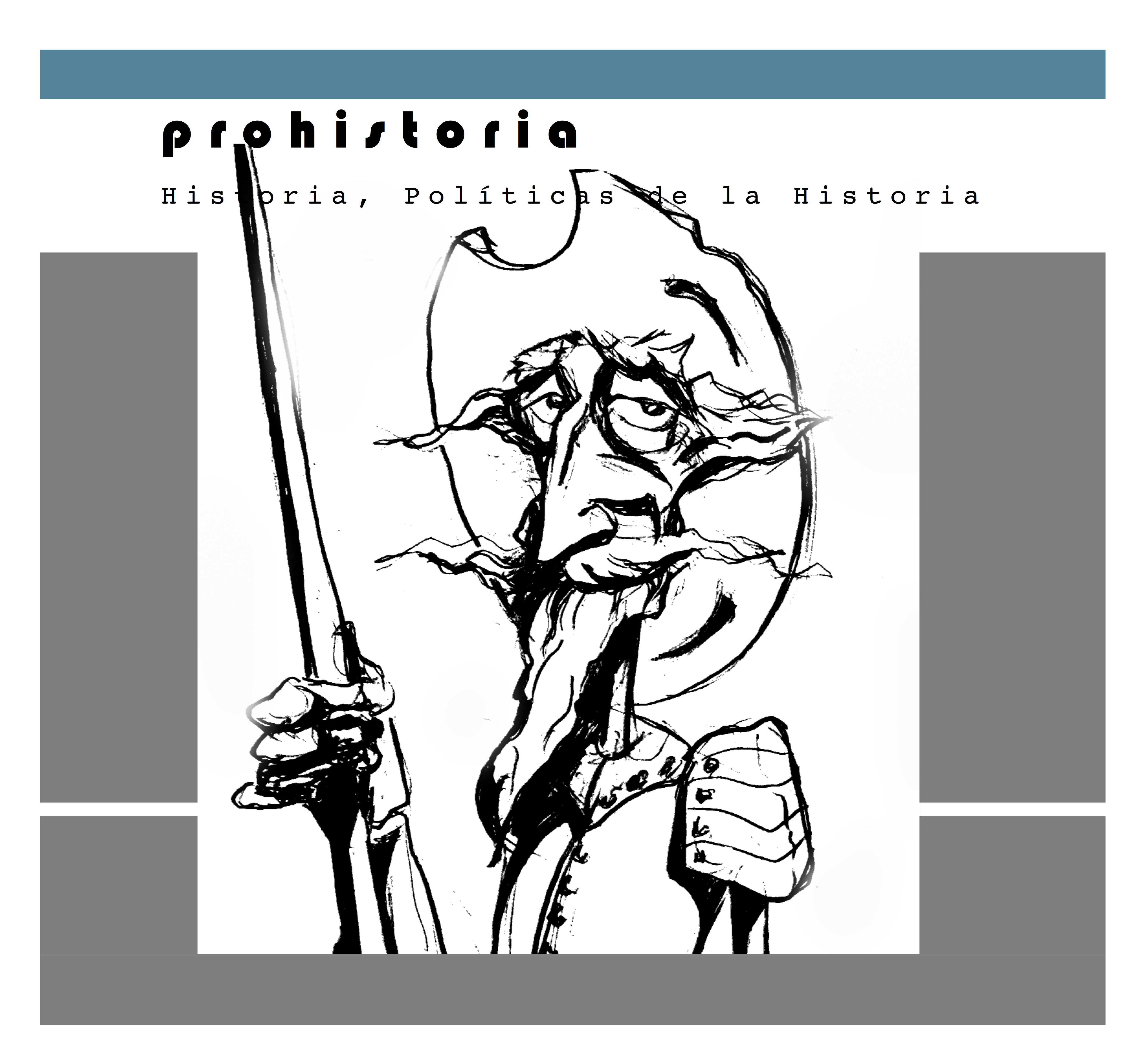Symbolic Appropriations and use of Violence in the Circumnavigation Voyages of Francis Drake (1577-1580) and Thomas Cavendish (1586-1588)
DOI:
https://doi.org/10.35305/prohistoria.vi34.1339Keywords:
Magellan Strait, Francis Drake, Thomas Cavendish, Representations, XVIth CenturyAbstract
Five centuries after the first crossing of the Magellan Strait, the English experiences of Francis Drake (1577-1580) and Thomas Cavendish (1586-1588) are analyzed with the aim of reconstructing the symbolic appropriations that the navigators made on the Tierra del Fuego region and its inhabitants. Printed books, manuscripts, images and maps evoke the southernmost American otherness as a device of the overseas competition between England and Spain. Besides, they show the hostilities with the Natives unleashed during the crossing, which were seen according the travelers’ objectives and their validation as authors. Hence this work emphasizes the contrasts between the two English circumnavigation experiences, giving an account of the conditions in which their representations were made.
Downloads
References
Andrews, Kenneth R. (1974). “Latin America”, en Quinn, David B. (ed.), The Hakluyt Handbook, 2 vols., London: Hakluyt Society, vol. 1, pp. 234-243.
Augeron, Mickaël (1997). "Coligny et les Espagnols a travers la course (1560-1572): une politique maritime au service de la Cause protestante", en Acerra, Martine (ed.), Coligny, les Protestants et la mer, Paris: Presses de l'Université de Paris-Sorbonne, pp. 155-176.
Armitage, David (2004 [2000]). The Ideological Origins of the British Empire, Cambridge: Cambridge University Press.
Appleby, John C. (2001 [1998]). “War, Politics, and Colonization, 1558-1625”, en Canny, Nicholas (ed.). The Origins of Empire. British Overseas Enterprise to the Close of the Seventeenth Century. Vol. 1 de “The Oxford History of the British Empire” (5 vols.), Oxford: Oxford University Press, pp. 55-78.
Benites, María Jesús (2004). “Con la lanza y con la pluma”. La escritura de Pedro Sarmiento de Gamboa, San Miguel de Tucumán: Facultad de Filosofía y Letras de la Universidad Nacional de Tucumán.
Bueno Jiménez, Alfredo (2016). “El Nuevo Mundo en el imaginario gráfico de los europeos. De Bry, Hulsius, Jacob Van Meurs y Pieter Van der Aa, Revista San Soleil. Estudios de la Imagen, vol. 8, pp. 229-256.
Bueno Jiménez, Alfredo (2013). Hispanoamérica en el imaginario gráfico de los europeos. De Bry y Hulsius. Tesis doctoral por la Universidad de Granada. Edición on-line de la Universidad de Granada, https://hera.ugr.es/tesisugr/23007941.pdf (consultado el 31/12/19).
Burke, Peter (2002). “Context in context”, Common Knowledge, vol. 8, issue 1 (Winter 2002), pp. 152-177.
Canny, Nicholas (2001 [1998]). “The Origins of Empire: An Introduction”, en Canny, Nicholas (ed.) The Origins of Empire. British Overseas Enterprise to the Close of the Seventeenth Century. Vol. 1 de “The Oxford History of the British Empire” (5 vols.), Oxford: Oxford University Press, pp. 1-33.
Castro Morales, Belén (2013). “Francis Drake en la Patagonia”, Revista de Lengua y Literatura, Universidad Nacional de Comahue, núm. 36, 13 págs. http://revele.uncoma.edu.ar/htdoc/revele/index.php/letras/article/view/94/576 (consultado el 7/1/2020)
Chartier Roger. (2001 [1996]). Escribir las prácticas. Foucault, de Certau, Marin, Buenos Aires: Manantial.
Draper, Benjamin P. (1984). “A Collection of Drake Bibliographic Items, 1569-1659”, en Thrower, Norman (ed.), Sir Francis Drake and the famous voyage, 1577-1580, Los Angeles: University of California, pp. 173-206.
Elliott, John H. (1972 [1970]). El Viejo y el Nuevo Mundo, 1492-1650, Madrid: Alianza.
Gallegos Gabilondo, Simón (2018). Les Mondes du Voyageur. Une épistémologie de l’exploration (XVIe-XVIIIe siècle), París : Éditions de la Sorbonne.
Games, Alison (2006). “Beyond the Atlantic: English Globetrotters and Transoceanic Connections”, en The William and Mary Quarterly, Third Series, vol. 63, n° 4 (Oct. 2006), pp. 675-692.
Gill, Crispin (1884). “Drake and Plymouth”, en Thrower, Norman (ed.), Sir Francis Drake and the famous voyage, 1577-1580, Los Angeles: University of California, pp.78-89.
Greenhow, Robert (1844). The History of Oregon and California and the Other Territories on the North-West Coast of North America, London: John Murray.
Lane, Kris E. (1998 [1967]). Pillaging the Empire. Piracy in the Americas, 1500-1750, New York: Sharpe.
Lois, Carla (2010). “Paisajes toponímicos. La potencia visual de los topónimos y el imaginario geográfico sobre la Patagonia en la segunda mitad del siglo XIX”, en Roque de Oliveira, Francisco y Mendoza Vargas, Héctor (comps.), Mapas de la mitad del mundo. La cartografía y la construcción territorial de los espacios americanos, siglos XVI al XIX, Lisboa: Centro de Estudos Geográficos, Universidade de Lisboa, pp. 317-341.
López Palmero, Malena (2020). “Alteridades confrontadas en los relatos del viaje alrededor del mundo de Francis Drake (1577-1580)”, en AAVV, El Renacimiento. La vida cultural europea entre los siglos XIV y XVII, Buenos Aires: Editorial de la Facultad de Filosofía y Letras de la Universidad de Buenos Aires. En prensa.
López Palmero, Malena (2016). “Avatares editoriales del viaje de circunnavegación de Francis Drake (1577-1580)”, en González Mezquita, María Luz (ed.), Historia Moderna: actores, discursos y prácticas, Mar del Plata: Universidad Nacional de Mar del Plata, pp. 195-200.
Mancall, Peter C. (2007). Hakluyt’s Promise. An Elizabethan’s Obsession for an English America, New Haven and London: Yale University Press.
Marin, Louis 2009 (1981). “Poder, representación, imagen”, Prismas. Revista de historia intelectual, n° 13, pp. 135-153
Martínez, Carolina (2019). Mundos perfectos y extraños en los confines del Orbis Terrarum, Buenos Aires: Miño y Dávila.
Martínez Pérez, Rosa María (2016). “Los corsarios ingleses y la provisión para el viaje de circunnavegación de Francis Drake, 1577-1580”, Legajos 9 Boletín AGN, octava época, año 3 (enero-abril 2016), pp. 77-115.
Martinic, Mateo (2012). “Los holandeses en las Islas de los Pingüinos (1599-1615)”, en Magallania, vol. 40 (2), pp. 7- 22. En línea: https://scielo.conicyt.cl/scielo.php?script=sci_arttext&pid=S0718-22442012000200001#n5 (consultado el 31/07/2019):
Martinic, Mateo (1998). “Drake y el descubrimiento de la insularidad fueguina. La evidencia cartográfica”, en Anales del Instituto de la Patagonia, Serie Ciencias, núm. 26, pp. 5-22
Nuttall, Zelia (ed.) (1914). New Light on Drake. A Collection of Documents Relating to his Voyage of Circumnavigation, 1577-1580, London: Hakluyt Society.
Pagden, Anthony (2001 [1998]). “The Struggle for Legitimacy and the Image of Empire in the Atlantic to c. 1700”, en Canny, Nicholas (ed.). The Origins of Empire. British Overseas Enterprise to the Close of the Seventeenth Century. Vol. 1 de “The Oxford History of the British Empire” (5 vols.), Oxford: Oxford University Press, pp. 34-54.
Parry, John H. (1984). “Drake and the World Encompassed”, en Thrower, Norman (ed.), Sir Francis Drake and the famous voyage, 1577-1580, Los Angeles: University of California, pp. 1-11.
Penhos, Marta N. (2018). Paisaje con figuras. La invención de Tierra del Fuego a bordo del Beagle (1826-1836), Buenos Aires: Ampersand.
Quinn, David B. (1996). Sir Francis Drake as Seen by his Contemporaries, Providence: The John Carter Brown Library.
Quinn, David B. y Ryan, Anthony N. (1983). England’s Sea Empire, 1550-1642, London: George Allen and Unwin.
Quinn, David B., Armstrong, C. E., y Skelton, R. A. (1974). “The primary Hakluyt bibliography”, en Quinn, David B. (ed.) The Hakluyt Handbook, 2 vols., London: Hakluyt Society, pp. II- 461-575.
Quinn, David B. y Quinn, Alison M. (1974). “Contents and sources of the three major works”, en Quinn, David B. (ed.), The Hakluyt Handbook, 2 vols., London: Hakluyt Society, pp. II-333-460.
Quinn, David B. (1974). “Hakluyt´s reputation”, en Quinn, David B. (ed.) The Hakluyt Handbook, 2 vols., London: Hakluyt Society, pp. I: 133-152.
Silverberg, Robert (1997 [1972]). The Longest Voyage. Circumnavigators in the Age of Discovery, Athens: Ohio University Press.
Taylor, E. G. R. (1930). “The Missing Draft of Drake’s Voyage of 1577-80”, in The Geographical Journal, vol. 75, núm. 1 (January 1930), pp. 46-47.
Twiss, Travers (1846). The Oregon Question Examined, in Respect to Facts and the Law of Nations, London: Longman, Brown, Green, and Longmans.
Van Groesen, Michiel (2008). “The De Bry Collection of Voyages (1590-1634): Earl America reconsidered”, in Journal of Early Modern History 12 (2008), pp. 1-24.
Voigt, Lisa (2009). Writing Captivity in the Early Modern Atlantic. Circulations of Knowledge and Authority in the Iberian and English Imperial Worlds, Chapel Hill: University of North Carolina Press.
Wallis, Helen (1984). “The Cartography of Drake’s Voyage”, en Thrower, Norman (ed.) Sir Francis Drake and the famous voyage, 1577-1580, Los Angeles: University of California, pp. 121-163.
Wallis, Helen (1974). “The Pacific”, en Quinn, David B. (ed.) The Hakluyt Handbook, 2 vols., London: Hakluyt Society, pp. I: 223-233.
Wallis, Helen (1951). “The First English Globe: A Recent Discovery”, in The Geographical Journal, vol. 117, núm. 3 (Sept. 1951), pp. 275-290.
Published
How to Cite
Issue
Section
License

This work is licensed under a Creative Commons Attribution-NonCommercial-ShareAlike 4.0 International License.
- Authors retain copyright and grant the journal right of first publication with the work simultaneously licensed under Creative Commons Attribution 4.0 International License.
- Authors are able to enter into separate, additional contractual arrangements for the non-exclusive distribution of the journal's published version of the work (e.g., post it to an institutional repository or publish it in a book), with an acknowledgement of its initial publication in this journal.
Copyright of this issue © Prohistoria. Historia, políticas de la historia



















